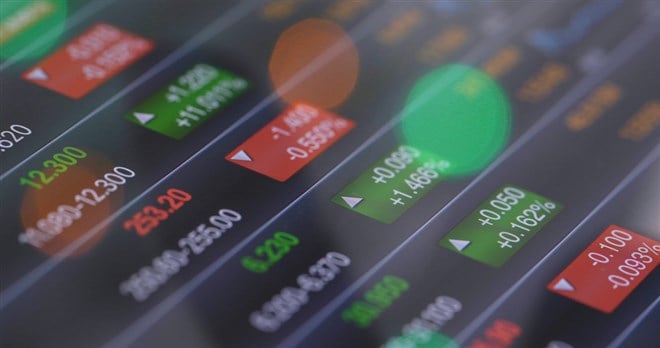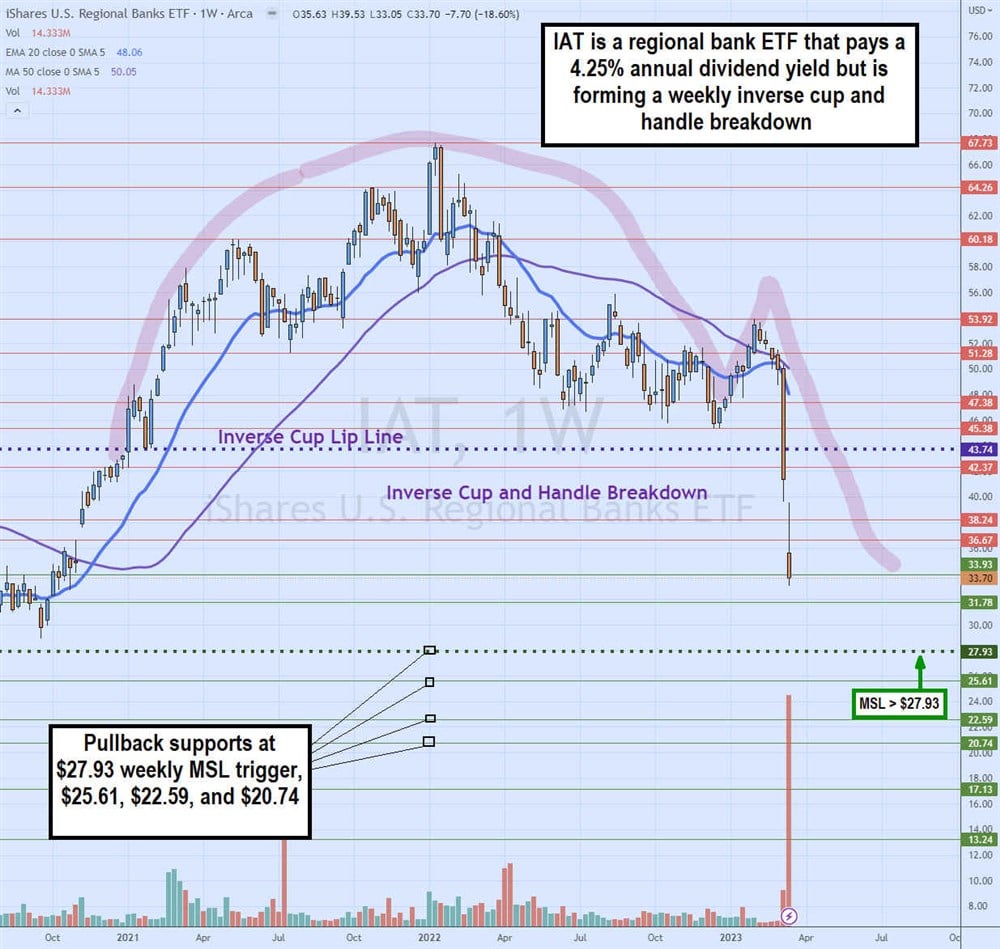Risk-Free Money Market vs. Bank Dividend Stock, Which is Better?Banks stocks have been making headlines due to the collapse of the nation's 16th largest bank, Silicon Valley Bank and Signature Bank. Notably, the
ByJea Yu•
This story originally appeared onMarketBeat

Banks stocks have been making headlines due to thecollapseof the nation's 16thlargest bank, Silicon Valley Bank and Signature Bank. Notably, the regional bank stocks have beenmercilessly punishedas the market adopts a "Throw the baby out with the bath water" mentality. Sentiment moves stock prices, and the sentiment with bank stocks hasn't been this bad since the 2008 financial meltdown.
Many banks last saw this kind of selling volume in 2008. While volatility can present opportunities, the risk may be too high for many investors.
Interestingly, the major market indexes have been ratcheting higher despite the uniform sell-off in the banks. This could be a "flight to safety" as money rotates into technology stocks, gold, and even bitcoin. But what about the银行股? What about bank stocks versus a risk-free 4% annual interest rate in a safe money market account?
Weighing the Risks
Money market accounts have seen a tidal wave of deposits as investors rush for the safety of an FDIC-insured asset with a risk-free rate of return. Since last year, the 4.5% spike in interest rates has swayed many investors to see shelter in an asset that won't lose money. It's also birthed new dividend investors seeking capital appreciation and income.
Indeed, not all bank stocks are in danger, so there must be an opportunity. Yes and no. Remember that sentiment drives stock prices in the near term. Negative sentiment can still lower prices and valuations even if the systemic risk is removed from bank stocks.
Dividend Versus Principal
Bank stocks are known forpaying dividends. Since the market has been falling since 2022, there has been a growth of dividend investors seeking yield income. The problem is that focusing solely on the annual dividend rate and ignoring capital depreciation can be detrimental. Many regional banks have seen double-digit losses in the past three weeks.
The iShares U.S. Regional Banks ETF (NYSEARCA: IAT) has fallen (29%) for 2023 versus a 2.41% gain for the S&P 500. The IAT pays a 4.25% annual dividend yield. Even if we round up to a 5% dividend yield, investors have lost nearly six-years worth of dividend payments in principal. Of course, these stocks can bounce back. The question is from where and when.
Bank Term Funding Program
In the past few weeks, theU.S. Federal Reserveand the U.S. Treasury have been trying to shore up any liquidity issues to galvanize sentiment in the U.S. banking system. The Fed rolled out a mini-TARP program, allowing banks to swap out their underwater treasuries under its Bank Term Funding Program to get additional liquidity for depositors. Regulation is likely around the corner for regional banks that, up to now, have been able to bypass Dodd-Frank reforms.
年代entiment Still Weak
Thecoalition of banksthat pledged to deposit $5 billion intoFirst Republic Bank (NYSE: FRC)includesJPMorgan Chase & Co. (NYSE: JPM),Wells Fargo & Co. (NYSE: WFC),Citigroup Inc. (NYSE: C), andBank of America (NYSE: BAC). While this helped FRC shares recover from a low of $19.80 to a high of $40.00 on March 16, 2023. Shares proceeded to collapse back down to $20.23 the following day. This indicates that investor sentiment is still fragile even if the liquidity problem gets resolved.
Money Market or Bank Dividend Stock?
The fallout in the banking stocks has yet to be resolved, which means there could be more downside. Of course, this makes divided yields rise, but that's bad news for investors who are already underwater holding bank stocks. That was the problem with Silicon Valley Bank, as interest rates rose. It's $80 billion of treasuries kept losing value. The principal should be protected. A 5% dividend pales compared to a (30%) drop in the underlying stock price.
Dollar Cost Averaging and Diversification through Regional Bank ETFs
保持资金在货币市场提供无风险returns of a 4% interest rate without damaging principle. If you want to benefit from capital appreciation by stepping into bank stocks, waiting for the smoke to clear is prudent. Rather than pick individual bank stocks, some risks can be spread out using a regional bank ETF like IAT.
Dollar-cost averaging and diversification are two strategies that can be implemented for risk-tolerant investors looking for a rebound in regional bank stocks.

Inverse Cup and Handle Breakdown
The weekly candlestick chart on IAT illustrates an inverse weekly cup and handle breakdown. The inverse cup lip line formed after shares bounced off $43.74 in January 2021. Shares climbed to a high of $67.73 by January 2022. The rounding bottom formed as shares gradually sold off close to the lip line at $45.38 in December 2022.
The bounce at the handle high peaked at $53.92 in January 2023 as IAT collapsed through the inverse cup lip line triggering the weekly inverse cup and handle breakdown in March 2023 on its heaviest weekly volume since 2008. Pullback support levels are at a $27.93 weekly market structure low (MSL) trigger, $25.61, $22.59, and $20.79.








